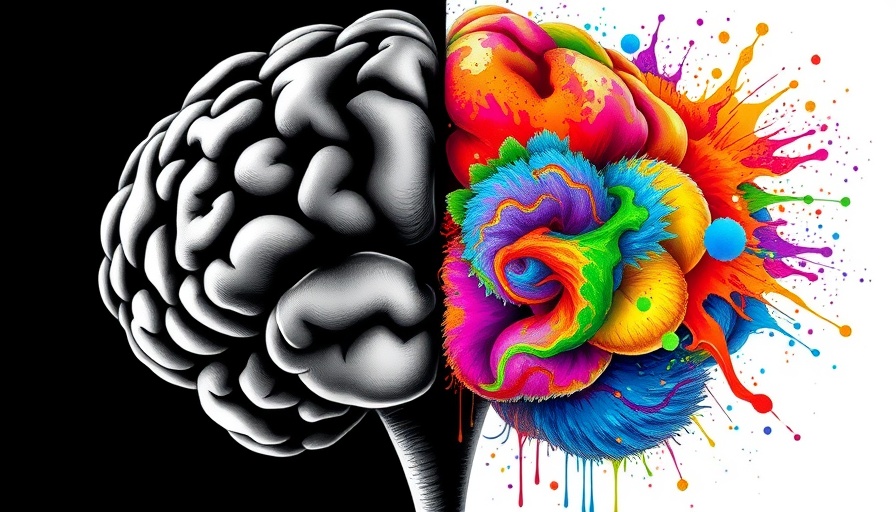
The Right Hemisphere Takes Center Stage
Recent research suggests that psychedelics may have a profound impact on brain function, particularly by increasing the dominance of the right hemisphere. This theory, proposed by Adam Levin from The Ohio State University, posits that psychedelics could help foster greater empathy and insight through the facilitation of right-brain activity, traditionally suppressed by the left-brain's dominance in normal consciousness.
Psychedelics and Brain Function
Psychedelics, known for their mind-altering effects, may actually alter the way the two hemispheres of the brain interact. Levin's model, termed HEALS (Hemispheric Annealing and Lateralization Under Psychedelics), illustrates this unique interaction. While the left hemisphere is focused on detail and linear problem-solving—traits crucial for our survival—Levin argues that psychedelics foster a harmonious collaboration, enabling a more expansive view of reality through greater right-brain engagement.
Understanding the HEALS Model
Levin's HEALS model indicates that psychedelics reverse the usual hierarchical functioning of the brain's hemispheres. Typically, the left side reigns supreme, meticulously dissecting thoughts and tasks, yet psychedelics might permit the right side, responsible for holistic thinking, to dominate. This shift could potentially restore a balanced perspective that may be beneficial in psychotherapy, where accessing one’s full emotional scope is essential for healing.
Empathy and Insight: Psychedelics’ Potential Benefits
As society increasingly values emotional intelligence and connection, the therapeutic application of psychedelics growingly attracts attention. Levin’s assertions find support in the burgeoning field of psychedelic therapy, which shows promise in treating mental health conditions, like depression and PTSD. These treatments advocate for using the psychedelics contextually, leveraging their insights to inspire personal growth and interpersonal connectivity.
Historical Context and Cultural Significance
The relationship between psychedelics and brain function has been examined in various cultures, particularly among indigenous peoples who have utilized psychedelic substances in spiritual practices for centuries. This historical context mirrors some modern clinical perspectives, which suggest that psychedelics facilitate a deeper understanding of oneself and the world around us, enhancing community health and wellness.
Counterarguments and Diverse Perspectives
While the potential of psychedelics is captivating, skepticism remains. Critics argue that the long-term effects of sustained psychedelic use are not yet fully understood and that such substances can provoke adverse psychological outcomes in susceptible individuals. Thus, it is crucial to balance enthusiasm for the therapeutic potential of psychedelics with an understanding of their risks, calling for carefully regulated clinical environments.
Looking Ahead: Future Research Directions
The exploration of psychedelics in neuroscience has likely just begun. Future research will hopefully clarify the complex interplay between the hemispheres and how psychedelics can be safely integrated into therapeutic contexts. As our understanding deepens, communities and wellness practitioners could unlock new pathways for improving mental health care.
Practical Steps for Community Health and Wellness
Engaging with the insights from Levin’s model opens up conversations about promoting holistic health practices in communities. Individuals can explore natural therapies and safe alternatives to support their wellness journeys—researching options like yoga, meditation, and dietary adjustments that resonate with the body’s wellness.
Conclusion: Exploring Psychedelics in a Balanced Manner
While the fascination surrounding psychedelics and their potential to alter brain function is mounting, it is vital to approach this subject with both curiosity and caution. As research progresses, it is critical for individuals and communities to stay informed about both the benefits and risks, ensuring holistic and sustainable approaches to health and wellness.
 Add Row
Add Row  Add
Add 




 Add Row
Add Row  Add
Add 


Write A Comment